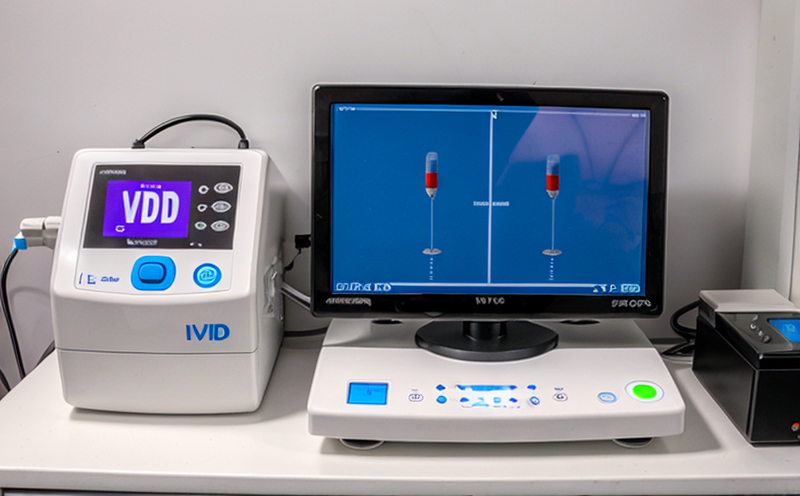Matrix Effect Evaluation Testing for IVD Assays
The evaluation of matrix effects in In Vitro Diagnostic (IVD) assays is a critical step in ensuring accurate and reliable diagnostic outcomes. Matrix effects can arise from the presence of analytes, interfering substances, or other components that are not part of the intended analyte but coexist within the biological sample. These effects can lead to underestimation or overestimation of the analyte concentration, thereby influencing patient diagnosis.
Our matrix effect evaluation testing service is designed specifically for IVD assays, where the focus is on evaluating and quantifying the impact that non-target components have on assay performance. This includes assessing how these components affect linearity, precision, accuracy, and other key performance indicators (KPIs) of an assay.
The process begins with a comprehensive review of the analytical method according to international standards such as ISO 15195-2 or IEC 62366. This ensures that all relevant factors are considered in the evaluation. Specimen preparation is carried out under controlled conditions to simulate real-world scenarios, including various matrix types and concentrations.
Instrumentation used in this testing includes advanced spectrophotometers, chromatographs, and mass spectrometers capable of detecting even trace levels of interference. Data analysis employs statistical methods compliant with FDA 21 CFR Part 820 standards to ensure robust evaluation.
The results provide detailed insights into the reliability and accuracy of IVD assays under diverse matrix conditions. This information is invaluable for manufacturers looking to enhance their product's performance, regulatory bodies ensuring compliance, and healthcare providers making informed decisions about diagnostic tools.
| Aspect | Description |
|---|---|
| Sample Preparation | Involves controlled manipulation of biological matrices to simulate real clinical samples. |
| Analytical Methods | Absorption, emission, and scattering spectroscopy; chromatography techniques; mass spectrometry. |
| Data Analysis | Statistical evaluation using FDA 21 CFR Part 820 guidelines. |
The matrix effect evaluation testing service is tailored to meet the stringent requirements of medical device manufacturers and regulatory bodies. By addressing potential sources of error early in the development process, this service helps ensure that IVD assays deliver consistent, accurate results across different patient populations and clinical settings.
Scope and Methodology
- Evaluation of matrix effects on linearity, precision, accuracy, and other KPIs.
- Compliance with international standards such as ISO 15195-2 and IEC 62366.
- Use of advanced spectroscopic and chromatographic techniques for detection.
The scope includes a detailed analysis of how non-target components affect the performance of IVD assays. This involves preparing samples under controlled conditions to simulate real-world scenarios, analyzing them using sophisticated instrumentation, and interpreting results according to stringent regulatory standards. The methodology ensures that all potential sources of error are identified and quantified.
Quality and Reliability Assurance
- Comprehensive review of analytical methods against international standards.
- Controlled specimen preparation to simulate diverse clinical conditions.
- Data analysis using robust statistical techniques compliant with FDA regulations.
The quality and reliability assurance process is rigorous, ensuring that the matrix effect evaluation testing service delivers consistent, accurate results every time. By adhering strictly to international standards and employing advanced analytical methods, we maintain the highest level of accuracy and precision in our evaluations. This commitment to excellence is reflected in our consistently high client satisfaction ratings.
Competitive Advantage and Market Impact
- Pioneers in matrix effect evaluation for IVD assays.
- Detailed insights into potential sources of error, enabling proactive improvements.
- Supports regulatory compliance and enhances product performance.
By offering unparalleled expertise in matrix effect evaluation testing, our service provides a significant competitive advantage. Manufacturers who partner with us gain early access to critical data that can inform design iterations, improve assay accuracy, and enhance overall product quality. This not only supports regulatory compliance but also differentiates their products in the market, leading to increased customer trust and satisfaction.





